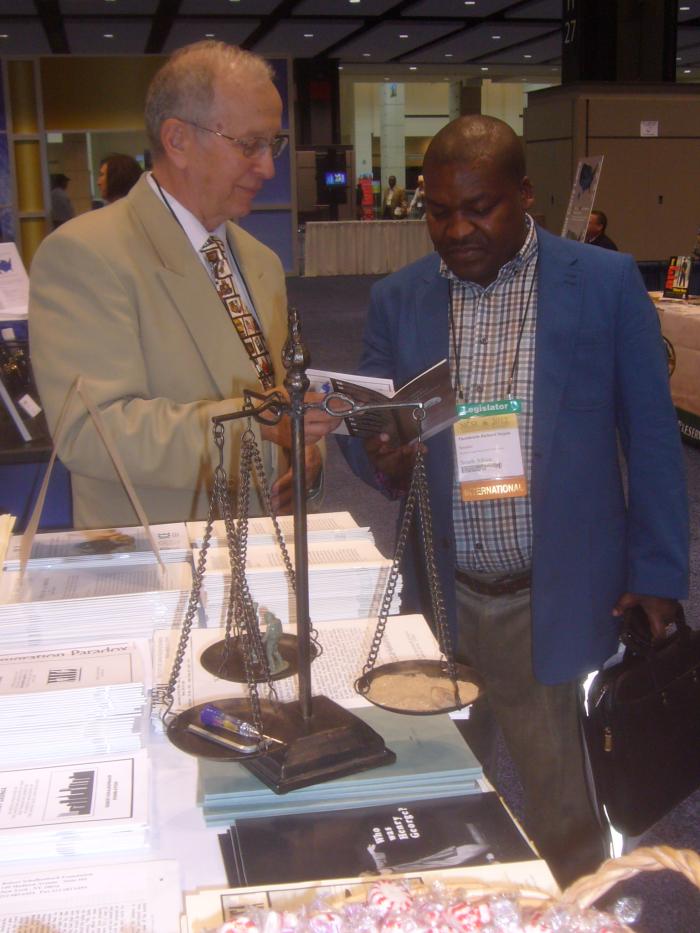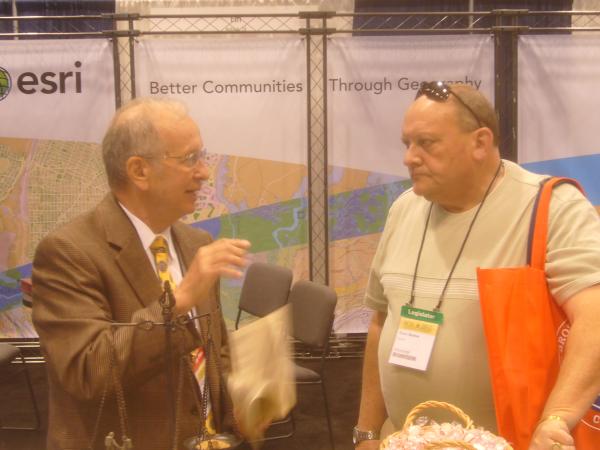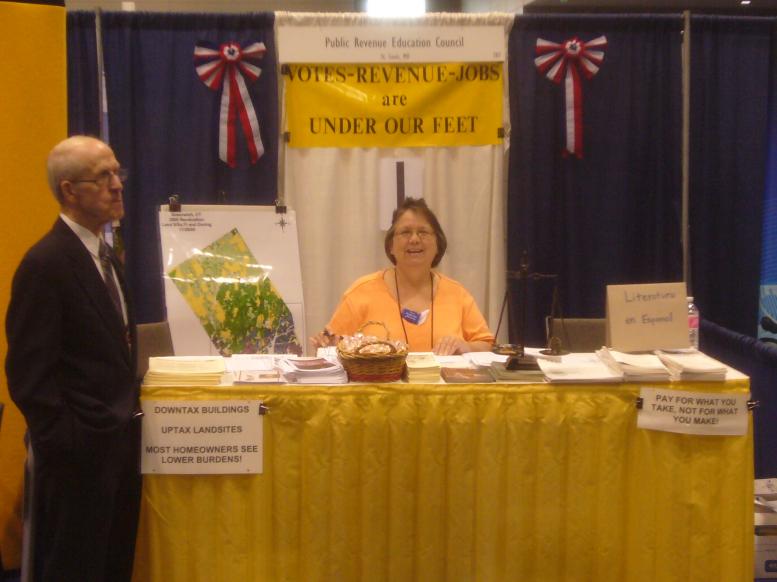What’s this? No posts for a month? Actually had several things “almost ready” to post, but meanwhile I spent an interesting three days at the National Council of State Legislators’ “Legislative Summit,” what most of us would call their annual convention.
Since about 1996, the Public Revenue Education Council (Missouri chapter of Common Ground — USA) has staffed a booth at the NCSL conference exhibit hall, alerting legislators, their staffs, and other attendees to the existence of a tax option which generates revenue while increasing, rather than discouraging, productive economic activity. Honing the message over the years (and gaining seniority which allows choice of better locations within the exhibit hall), PREC President Al Katzenberger and his colleagues may have gained some ground.

Among Al’s innovations is a custom-made (and unpatented, as far as I know) three-tray scale, used to illustrate the factors of production. Land, labor, and capital (the trays) are all necessary for most production, and usually use money (the chains) to facilitate the process. Banks and other financial institutions (the arms holding the chains) may try to manipulate the system unfairly, and it’s the job of government (the central post) to keep things more or less in balance.
For the 2012 event, which concluded Aug 9, Al was assisted by Don Killoren of St. Louis, Irene Marmi of Chicago, and this blogger. Since two people are generally enough to staff the booth, each of us had time to wander the hall visiting with other exhibitors– and there were many (a list is here). Why so many? As has been said: “No one’s liberty or property is safe while the legislature is in session,” so everyone wants legislators to do, or refrain from doing, something. Some exhibitors were interesting, and might be the subject of future posts.
Of course each of us has a slightly different view of what geoists want to accomplish, but we tried to present a unified message: “If you tax jobs, retail sales, and buildings, you’re likely to get less of those. If you tax the value of land as vacant, you’ll get economic benefits and, hey, let me tell you about much nicer your community will look.”

Few people might stop by a booth about public revenue, so Al and Don just call out to passers-by “Where are you from?” They reply, and Al or Don says “Oh, you could use this there.” But they’ve also learned (better than I) to just shut up and listen to each prospect, find out what their concerns are, and provide a helpful response.

Thinking about next year’s NCSL conference (in Atlanta), we might want to seek a cleaner look by having fewer documents on the table. Plastic racks would be suitable for some of them. Others would be “under the counter,” or perhaps even available only on request via email. People will put their business cards in a fish bowl if a prize is offered. What prize? Maybe a $50 RSF gift certificate, along with some suggestions about what to spend it on. Use the business cards to generate an email list. Three days after the conference, everybody gets a “Thank you and call us if we can help” message. If they don’t respond, they won’t hear from us again until a week before the 2014 (Minnesota) conference, when we invite them to stop by our booth.
We need an attention-getting colorful postcard-size piece, highlighting our special web address which we’ll set up for the occasion, and perhaps a phone number. To the extent possible, the look of the documents we distribute should be modernized and made consistent. The Revenue Source is Under Our Feet seriously needs updating, and must include contacts for (not necessarily in) every state.
Across from the PREC booth was ESRI, the dominant geographic information systems software provider, who almost certainly were behind the Greenwich land value map we used to illustrate how straightforward land value assessment is. They suggested some contacts and ideas which may aid geoists in the future.